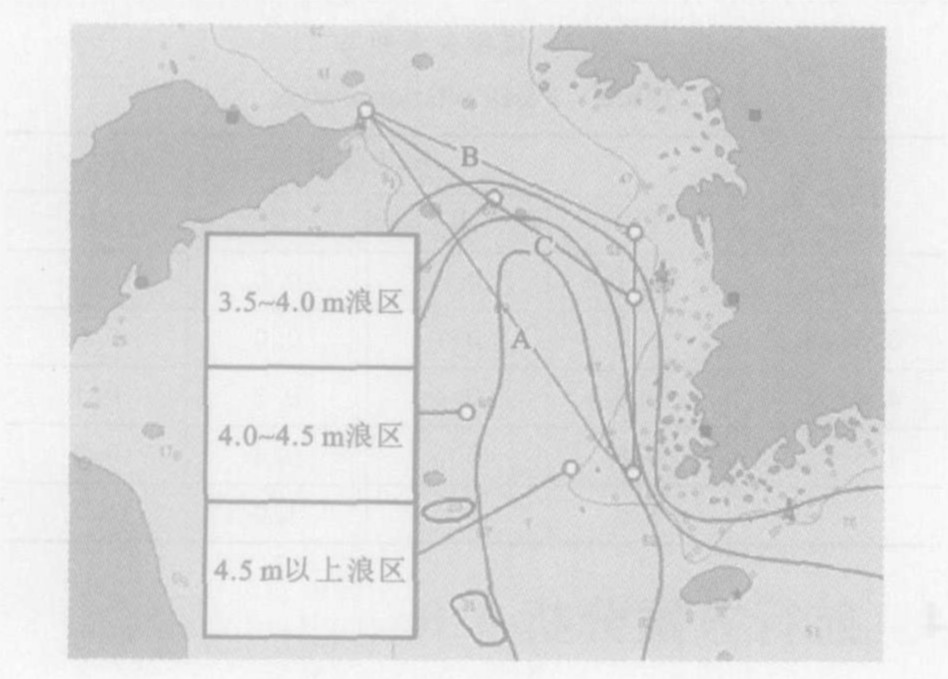Risk degree assessment model of navigating ship on heavy sea
-
摘要: 根据风险分析理论, 结合模糊综合评定数学模型, 提出了一种对大风浪中航行船舶的危险度进行定量估算的模型。在进行了大量的专家问卷调查后, 得到了客滚船“燕京”轮在大风和大浪的作用下, 可能发生不同等级事故的模糊关系矩阵, 对该轮在大风浪中的不同航行方案进行了危险度的实际计算。结果显示, 当该轮遇到大风浪时, 按正常航线行驶, 发生事故的风险度较大; 按习惯的北上避风方案绕航, 风险度最小; 而按以上两方案的折衷方案行驶, 有较大风险。此方法可以较好地对船舶在大风浪中的危险状况进行定量、直观地描述, 可供船舶驾驶员和船舶安全管理者用来掌握大风浪中航行船舶的风险状况, 进而有效实施风险决策。Abstract: Based on the theories of risk assessment and fuzzy comprehensive assessment, a new model of quantitative assessment to compute the risk degree of navigating ship on heavy sea was put forward.Using expert questionnaire method, the fuzzy relation matrix of occurring accident in different levels for a certain Ro/Ro vessel navigating on heavy sea was obtained, the risk degrees of different routes were calculated.The results show that on heavy sea the vessel faces a bigger risk degree on normal route, it has least risk degree on customary go-north route, it has a relative bigger risk degree on the compromise route of the two routes.It can be seen that the model can describe the risk degree of ship navigating on heavy sea quantitatively and objectively, it is useful for ship risky decision-making.
-
表 1 水上事故分级
Table 1. Classification for marine accident
事故等级 Ⅰ级: 小事故 Ⅱ级: 一般事故 Ⅲ级: 大事故 Ⅳ级: 重大事故 损失情况 没有达到一般事故等级以上的事故 人员有重伤, 或直接经济损失在300万元(人民币) 以下, 50万元以上 死亡1~2人, 或直接经济损失在500万元以下, 300万元以上 死亡3人以上, 或直接经济损失在500万元以上 表 2 各级事故隶属度
Table 2. Subjection degrees of different accident grades
隶属度 0.0 0.1 0.2 0.3 0.4 0.5 0.6 0.7 0.8 0.9 1.0 意义 不会 极小 非常小 很小 较小 临界 较大 很大 非常大 极大 必定 表 3 模糊关系矩阵
Table 3. Fuzzy relation matrix
浪高/m 事故等级 Ⅰ Ⅱ Ⅲ Ⅳ ≤3.5 0.1 0.0 0.0 0.0 3.5~4.0 0.2 0.1 0.0 0.0 4.0~4.5 0.6 0.4 0.3 0.1 4.5~5.0 0.8 0.5 0.4 0.3 ≥5.0 1.0 1.0 1.0 1.0 表 4 航行方案
Table 4. Sailing plans
航行方案 A B C 航程/n mile 231 274 258 大风浪中航行时间和航向与风向/浪向的夹角 8~9级/4.5~5.0 m 10.0 h/0° — — 8级/4.0~4.5 m 2.5 h/0° 1.0 h/45° 1.0 h/45°4.0 h/0° 7~8级/3.5~4.0 m 2.0 h/0° 6.0 h/45° 5.5 h/45°3.0 h/0° ≤7级/≤3.5 m 2.5 h/0° 0.5 h/45°8.0 h/0° 3.0 h/0° 所用时间/h 17.0 15.5 16.5 -
[1] Robert W R, James L R. Thomas D. Incorporating risk assessment and benefit-cost analysis in environment management[J]. Risk Analysis, 1988, 8(3): 415-420. https://www.cnki.com.cn/Article/CJFDTOTAL-YWFX202106010.htm [2] 李世奎. 自然灾害系统辨识和风险评价模型图例[A]: 中国农业灾害风险评价与对策[C]. 北京: 气象出版社, 1999. [3] Chen Xin-min, Xia Jia, Luo Guo-yu. Risk analysis and assessment for burst of Hanging river at down reaches of Huanghe river[J]. Journal of Hydraulics, 2000, 28(10): 12-16. (in Chinese) https://www.cnki.com.cn/Article/CJFDTOTAL-JJYJ201412003.htm [4] Guo Qi-shun. Status and cause analysis of the world marine accidents[J]. China Ship Survey, 2000, 2(3): 43-45. (in Chinese) doi: 10.3969/j.issn.1009-2005.2000.03.022 [5] Liu Da-gang, Zheng Zhong-yi, Wu Zhao-lin. Risk analysis system of underway ships on heavy sea[J]. Journal of Traffic and Transportation Engineering, 2004, 4(2): 100-102. (in Chinese) http://transport.chd.edu.cn/article/id/200402023 [6] 湯淺通史, 重見利幸, 星乃泰之. 荒天航行時の船舶の運航限界に ついて[J]. 日本海事協会会誌, 2002, 258(1): 49-61. https://cpfd.cnki.com.cn/Article/CPFDTOTAL-XBWX201906001148.htm [7] Liu Da-gang, Li Zhi-hua. Statistical characters of the accuracy of gale forecasting[J]. Journal of Dalian Maritime University, 2003, 29(4): 47-49. (in Chinese) https://www.cnki.com.cn/Article/CJFDTOTAL-DLHX202201002.htm [8] 黄崇福, 王家鼎. 模糊信息优化处理技术及其应用[M]. 北京: 北京航空航天大学出版社, 1995. -





 下载:
下载:


